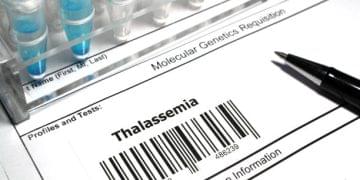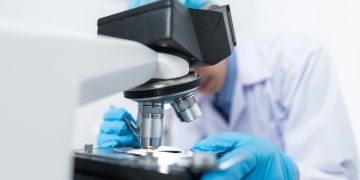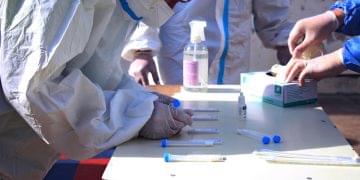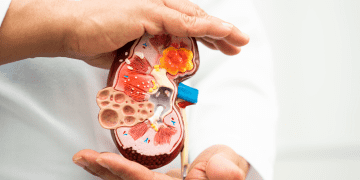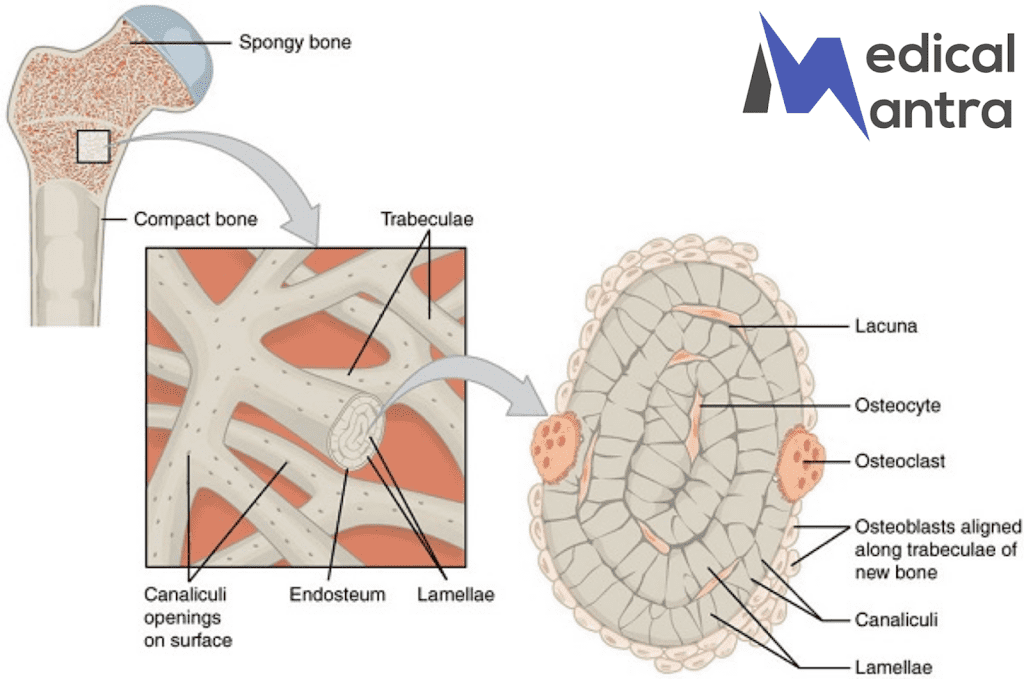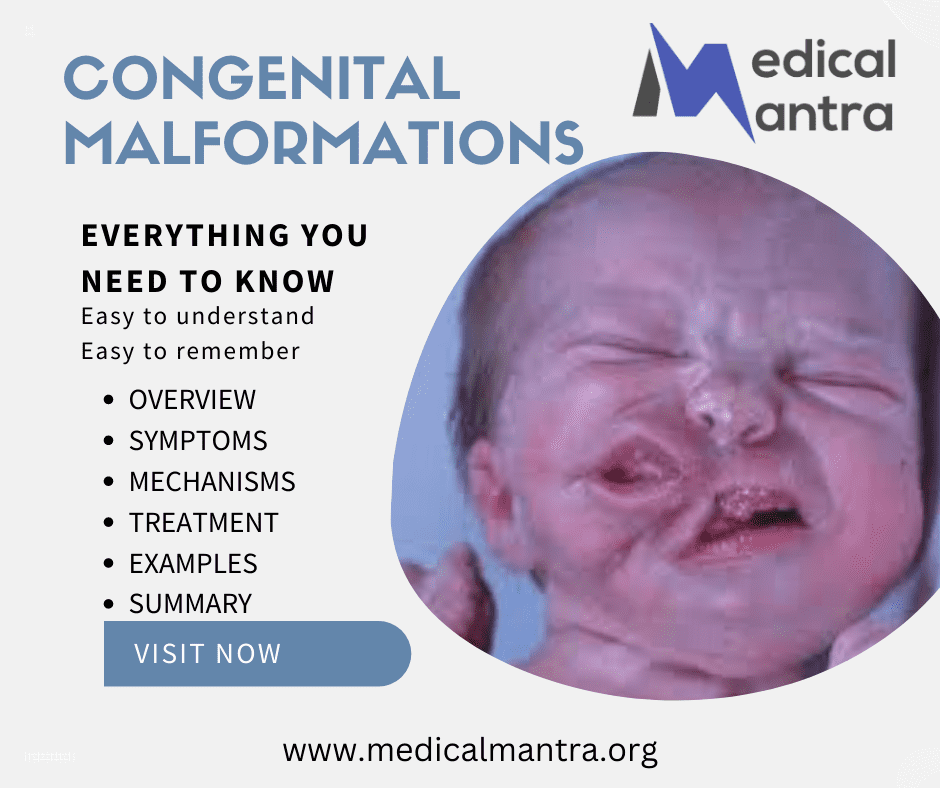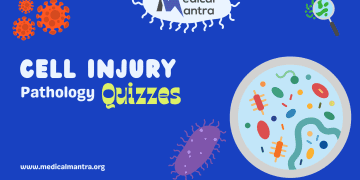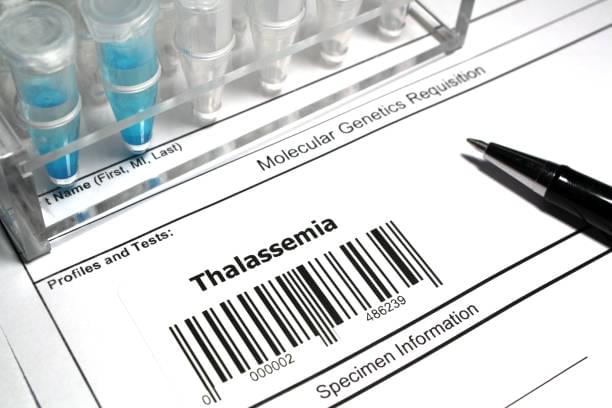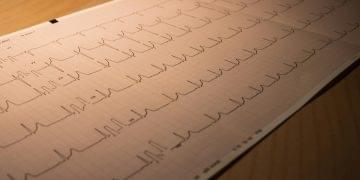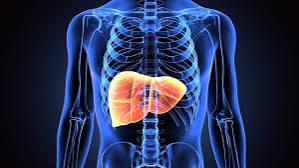Congenital malformations, also known as birth defects, are structural or functional abnormalities that occur during fetal development. These conditions can affect various parts of the body, such as the heart, brain, limbs, or internal organs. While the majority of babies are born healthy, approximately 3% to 5% worldwide are affected by congenital malformations. Understanding the causes, mechanisms, and treatment options for these conditions is crucial for both medical professionals and parents.
Causes of Congenital Malformations:
Congenital malformations can be genetic abnormalities, environmental influences, and mix of both. Here are some causes of congenital malformation :
- Genetic Factors: Many congenital malformations have a genetic basis. This malformation can be result of inherited gene mutations or chromosomal abnormalities. These genetic defects can be transferred from parents who carry the altered genes or may occur spontaneously during the formation of reproductive cells.
- Environmental Factors: Certain environmental factors during pregnancy can increase the risk of congenital malformations. These include exposure to teratogenic agents such as drugs, alcohol, tobacco, radiation, or certain infections like rubella, cytomegalovirus, or Zika virus.
- Multifactorial Causes: In some cases, the interplay between genetic and environmental factors contributes to the development of congenital malformations. For example, a genetic susceptibility combined with exposure to a specific environmental trigger may lead to certain birth defects.
Mechanisms of Congenital Malformation:
The mechanisms of congenital malformation is complex and based on it’s types , here are some mechanisms for congenital malformation :
- Disruption of Normal Development: Some malformations occur due to disruptions during critical stages of fetal development. These disruptions can affect the growth, differentiation, or migration of cells and tissues, leading to structural abnormalities.
- Impaired Organogenesis: Organogenesis is the process by which organs develop from the early embryonic stages. If this process is disturbed, it can result in malformations in specific organs or systems.
- Faulty Gene Expression: Genetic mutations or alterations can lead to abnormal gene expression during development. This can disrupt the intricate cascade of molecular events necessary for proper organ formation, potentially resulting in congenital malformations.
Treatment Options:
Some of congenital malformation don’t have a proper treatment but usually the treatment of congenital malformations depends on the type and severity of the condition. Here are some common treatments:
- Medical Management: In less severe cases, where the malformation does not significantly impact the child’s health or functionality, conservative medical management may be sufficient. This may involve monitoring the condition, providing supportive care, or administering medications to alleviate symptoms.
- Surgical Interventions: Surgical procedures are often necessary for more complex malformations or those that pose a threat to the child’s well-being. Skilled surgeons can correct structural abnormalities, repair defects, or improve organ function through various techniques.
- Therapies and Rehabilitation: For conditions that result in long-term disabilities, rehabilitative therapies play a vital role in maximizing the child’s potential. Physical therapy, occupational therapy, speech therapy, and other interventions can help enhance motor skills, communication, and overall quality of life.
Here are some examples of congenital malformations:
- Cleft Lip and Palate: This malformation occurs when the tissues that form the lip and palate do not fuse properly during fetal development, resulting in a gap or split. It can affect the upper lip, the roof of the mouth (palate), or both.
- Spina Bifida: Spina bifida is a neural tube defect that affects the development of the spinal cord. It occurs when the neural tube, which forms the baby’s brain and spinal cord, does not close properly. This condition can lead to varying degrees of physical and neurological disabilities.
- Congenital Heart Defects: These are structural abnormalities in the heart that affect its function. Examples include atrial septal defects (ASD), ventricular septal defects (VSD), and Tetralogy of Fallot, a complex combination of heart defects.
- Down Syndrome: Down syndrome is a genetic disorder caused by the presence of an extra copy of chromosome 21. It leads to distinct physical features, intellectual disabilities, and an increased risk of certain health conditions, such as heart defects and leukemia.
- Clubfoot: Clubfoot is a deformity of the foot that occurs when the foot and ankle are twisted or turned inward. It can affect one or both feet and may require treatment with braces, casts, or surgery to correct the alignment.
- Neural Tube Defects: These are a group of malformations that involve the incomplete closure of the neural tube, resulting in conditions such as spina bifida or anencephaly (a severe underdevelopment of the brain and skull).
- Congenital Anomalies of the Kidney and Urinary Tract: These malformations involve abnormalities in the development of the kidneys, ureters, bladder, or urethra. Examples include renal agenesis (absence of one or both kidneys) or urinary tract obstructions.
- Limb Deficiencies: Limb deficiencies refer to the absence or underdevelopment of limbs or fingers/toes. This can range from minor abnormalities to more severe cases where entire limbs are missing.
Summary of Congenital Malformation :
In conclusion, congenital malformations are complex conditions that can arise from a combination of genetic and environmental factors. Understanding the causes and mechanisms behind these abnormalities is crucial for appropriate diagnosis, treatment, and prevention strategies. Advances in genetic research and medical interventions continue to provide hope for affected individuals and their families, aiming to improve outcomes and enhance the quality of life for those living with congenital malformations.


